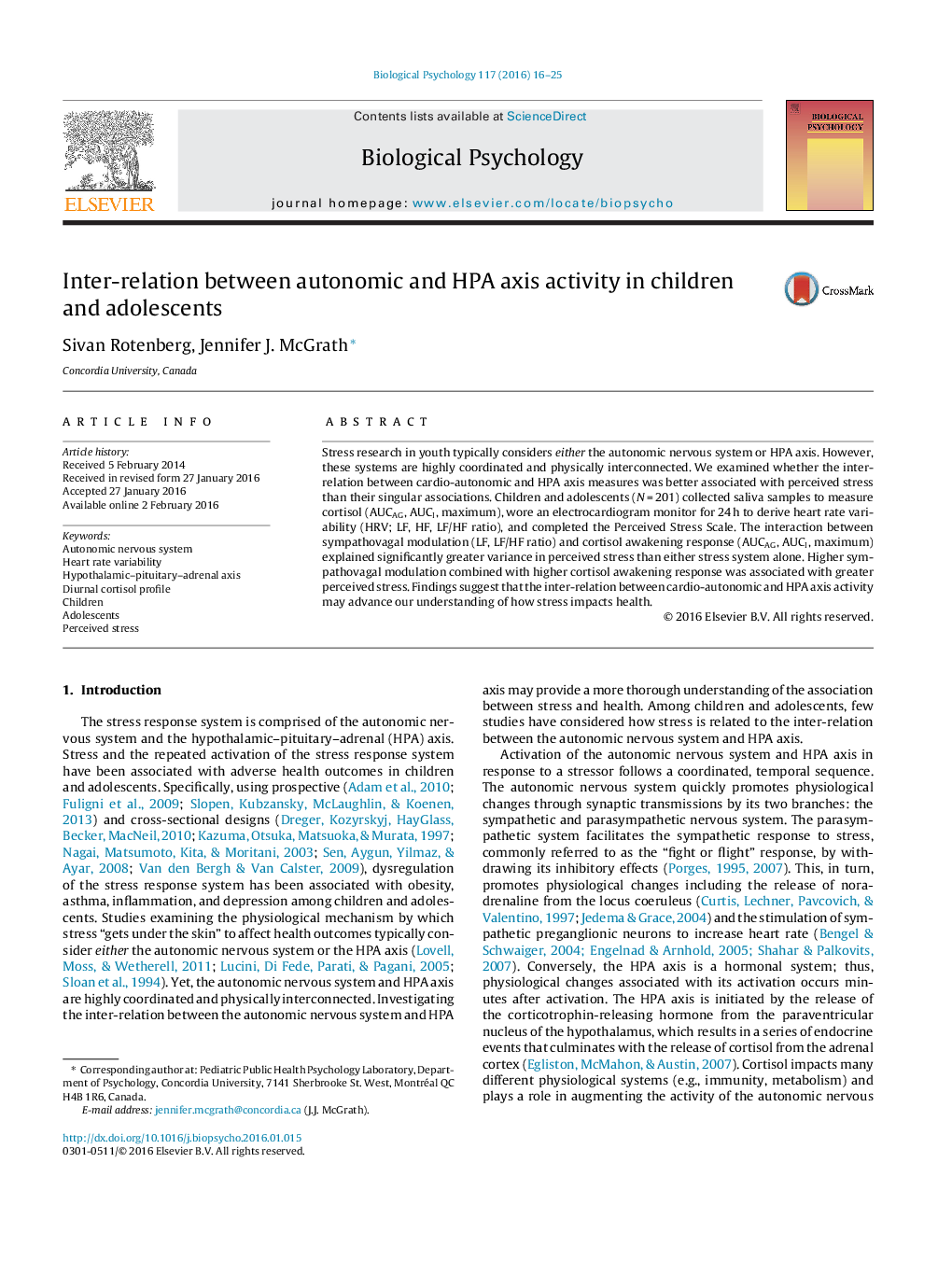| کد مقاله | کد نشریه | سال انتشار | مقاله انگلیسی | نسخه تمام متن |
|---|---|---|---|---|
| 920693 | 1473856 | 2016 | 10 صفحه PDF | دانلود رایگان |
• Study examined whether interaction between cardio-autonomic control and HPA axis activity better explained perceived stress than either measure alone.
• Higher sympathovagal modulation together with higher cortisol awakening response was associated with greater perceived stress.
• Hyper-arousal across stress response systems was related to higher stress.
• Findings have important implications for investigating pathways relating stress and health.
Stress research in youth typically considers either the autonomic nervous system or HPA axis. However, these systems are highly coordinated and physically interconnected. We examined whether the inter-relation between cardio-autonomic and HPA axis measures was better associated with perceived stress than their singular associations. Children and adolescents (N = 201) collected saliva samples to measure cortisol (AUCAG, AUCI, maximum), wore an electrocardiogram monitor for 24 h to derive heart rate variability (HRV; LF, HF, LF/HF ratio), and completed the Perceived Stress Scale. The interaction between sympathovagal modulation (LF, LF/HF ratio) and cortisol awakening response (AUCAG, AUCI, maximum) explained significantly greater variance in perceived stress than either stress system alone. Higher sympathovagal modulation combined with higher cortisol awakening response was associated with greater perceived stress. Findings suggest that the inter-relation between cardio-autonomic and HPA axis activity may advance our understanding of how stress impacts health.
Journal: Biological Psychology - Volume 117, May 2016, Pages 16–25
